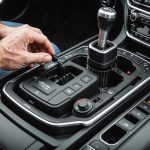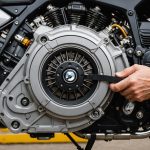Understanding Optimal Tire Pressure for Sports Cars
Maintaining optimal tire pressure in sports cars is crucial for both safety and performance, particularly on wet roads. Each sports car model typically comes with specific tire pressure recommendations designed to maximise handling and fuel efficiency. These recommendations take into account the car’s weight distribution and suspension setup, ensuring the tires maintain maximum surface contact with the road.
When tire pressure falls below or exceeds these levels, it can lead to several issues. Underinflated tires might cause poor road grip, reduced responsiveness, and increased risk of hydroplaning, especially on wet roads. Conversely, overinflated tires can result in a harsher ride, uneven tire wear, and reduced traction. Both scenarios can significantly impact the overall safety of the vehicle.
In parallel : Boosting safety: key strategies to optimize your vehicle”s automatic transmission performance
Additionally, incorrect pressure affects the car’s cornering abilities, braking efficiency, and even fuel consumption. For those driving in regions with unpredictable weather, maintaining the right tire pressure is even more vital. Regular checks using a reliable tire gauge can prevent potential performance declines and ensure the longevity of the tires. Adhering to these guidelines not only enhances safety but also delivers a thrilling driving experience.
Impact of Wet Conditions on Tire Performance
Wet road conditions pose significant challenges to tire grip and handling capabilities, especially for sports cars. When roads are slippery, tires have a more difficult time maintaining traction, which is crucial for driving control. As a result, the risk of hydroplaning increases markedly. Hydroplaning occurs when a layer of water causes the tires to lose direct contact with the road surface, compromising steering and braking. This phenomenon can severely impact driving safety, making it essential for drivers to adapt their driving style accordingly.
Have you seen this : Ensuring vehicle safety: why regular drive belt maintenance is crucial for your car
When comparing tire performance in wet versus dry conditions, the differences are stark. On dry roads, tires achieve better grip, enhancing vehicle control and responsiveness. However, in wet conditions, the reduced grip requires greater caution and adjustments in speed. Sports car drivers must remain attentive to these changes to ensure safe handling.
Choosing appropriate tires and maintaining optimal tire pressure become even more critical on wet roads. Properly inflated tires offer better contact with the surface, improving grip and reducing the risk of hydroplaning. Regular checks and adaptations based on weather forecasts can enhance both safety and performance in challenges posed by wet road conditions.
Expert Insights on Tire Pressure Adjustments
Understanding expert advice on tire pressure adjustments is essential for optimising safety and driving conditions, especially during adverse weather. Automotive experts emphasise the need to tailor your vehicle’s tire pressure based on specific weather conditions and regional climate patterns. In wet conditions, such as those often experienced in the UK, slight alterations to your standard tire pressure can improve vehicle stability and reduce risks related to hydroplaning.
Experts recommend keeping tires slightly closer to the higher end of the range suggested by the car’s manufacturer during rainy seasons. This adjustment helps to maintain a firmer tire structure, which aids in dispersing water efficiently, thus decreasing the chance of losing grip on wet roads.
Sports car enthusiasts often share their experiences and maintenance practices, highlighting the importance of routine checks and timely pressure adjustments. Attention to weather forecasts can guide tire maintenance schedules, enabling drivers to modify their vehicles’ tire pressure as needed. In summary, consulting expert tips and aligning tire pressure settings according to the weather not only enhances safety but also boosts performance through dynamic handling adjustments, offering a safer, more controlled sports car driving experience.
Comparing Tire Types for Wet UK Roads
Selecting the right tire type is crucial for sports car owners navigating the often rainy UK roads. Different tires offer varied pros and cons in wet conditions, impacting both safety and performance.
Performance Tires for Sports Cars
Performance tires are designed for high speed and excellent handling, particularly enhancing wet road traction. These tires often include advanced tread patterns and compounds that shed water efficiently, improving grip and minimizing hydroplaning risks. Popular models include the Michelin Pilot Sport 4 and Pirelli P Zero, known for their superior wet handling. However, maintaining these tires requires vigilance—they tend to wear faster and may necessitate regular checks, especially during the rainy season.
All-Season Tires for Versatility
All-season tires provide delivery flexibility and balance across a range of UK climates. They offer decent wet traction, making them suitable for varied conditions. Nevertheless, they may fall short compared to specialized performance tires when it comes to handling sharp turns on drenched roads. Some recommended all-season models include the Continental AllSeasonContact and Goodyear Assurance WeatherReady, which afford a compromise between performance and safety.
Specialized Wet-Weather Tires
For drivers prioritising wet condition performance, specialized wet-weather tires can be a game-changer. These tires, such as the Bridgestone Potenza RE-71R, are engineered specifically for rainy environments, boasting enhanced water evacuation features. Their unique designs often lead to improved safety and control in heavy rain situations.
Practical Tips for Maintaining Optimal Tire Pressure
Maintaining optimal pressure in sports car tires is vital to ensure safety and performance. Regular checks and adjustments are key. Checking tire pressure frequently, ideally once a month, can preempt performance dips and prevent safety hazards. Use a tire gauge for precise readings. Ensure the tires are cool before measuring pressure to get the most accurate result.
A digital tire gauge is often recommended due to its precision and ease of use. Place the gauge onto the valve stem and press it down until the hissing sound stops. Read the pressure, and compare it with your sports car’s manual recommendation.
Avoid common mistakes such as relying solely on visual checks. It is difficult to judge the exact pressure level just by looking at the tire. Overfilling, as well as underfilling, pose various risks. Always adhere to the manufacturer’s specifications.
Adjustments may be needed based on factors like load, temperature, and seasonal changes. Ensuring your tires are inflated to their optimal levels maximizes both safety and tire longevity, crucial for a thrilling sports car driving experience on both dry and wet roads. Regular maintenance contributes to enhanced handling and fuel efficiency.
Visual Aids and Resources
Understanding tire pressure isn’t just about knowing the numbers; visual aids like charts and graphs significantly enhance understanding. They illustrate complex relationships between tire pressure, performance, and safety, especially for sports cars in challenging conditions.
Using charts, sports car owners can quickly identify optimal tire pressures for various makes and models. These tools can compare the manufacturer’s recommended pressures against those adjusted for different weather scenarios. For instance, a graph might plot tire pressure against hydroplaning risk, showing a marked increase when pressures deviate from the optimal range.
In addition to charts, graphs can depict performance metrics like braking distance and cornering ability on wet roads relative to tire pressure adjustments. These visual resources powerfully convey how maintaining the right pressure levels influences both safety and performance.
For those looking to delve deeper, reliable tire pressure monitoring tools are invaluable. Various online resources and smartphone apps can provide real-time monitoring, alerting users to pressure discrepancies. While many car systems include built-in monitors, external devices often offer enhanced features, making them a worthy investment for the safety and longevity of any sports car.











